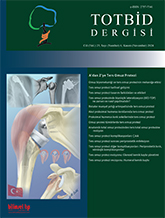
The shoulder is one of the most biomechanically complex joints in human body, with a wide range of motion and joint stability in perfect harmony. This article explores the key biomechanical principles of the shoulder, focusing on the glenohumeral joint, the primary site for shoulder mobility. The role of static stabilizers, including ligaments and the joint capsule, alongside dynamic stabilizers like the rotator cuff muscles, is discussed in maintaining joint stability during motion. We examine how these structures interact to control the humeral head's translation within the glenoid, ensuring stability across a wide range of shoulder movements. Additionally, the article delves into the biomechanical challenges associated with shoulder pathologies, such as rotator cuff tears and shoulder instability, highlighting the abnormal forces and translations that contribute to dysfunction. Reverse shoulder prosthesis alters the biomechanics of the shoulder by reversing the ball-and-socket configuration, thereby increasing the deltoid`s mechanical advantage but also introducing potential limitations in rotational movements and stability concerns. The article concludes with insights into how an understanding of shoulder biomechanics can inform both surgical and rehabilitation strategies, optimizing patient outcomes by maintaining the delicate balance between mobility and stability.